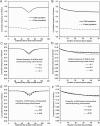Cost-effective length and timing of school closure during an influenza pandemic depend on the severity
- PMID: 24447310
- PMCID: PMC3901768
- DOI: 10.1186/1742-4682-11-5
Cost-effective length and timing of school closure during an influenza pandemic depend on the severity
Abstract
Background: There has been a variation in published opinions toward the effectiveness of school closure which is implemented reactively when substantial influenza transmissions are seen at schools. Parameterizing an age-structured epidemic model using published estimates of the pandemic H1N1-2009 and accounting for the cost effectiveness, we examined if the timing and length of school closure could be optimized.
Methods: Age-structured renewal equation was employed to describe the epidemic dynamics of an influenza pandemic. School closure was assumed to take place only once during the course of the pandemic, abruptly reducing child-to-child transmission for a fixed length of time and also influencing the transmission between children and adults. Public health effectiveness was measured by reduction in the cumulative incidence, and cost effectiveness was also examined by calculating the incremental cost effectiveness ratio and adopting a threshold of 1.0 × 10⁷ Japanese Yen/life-year.
Results: School closure at the epidemic peak appeared to yield the largest reduction in the final size, while the time of epidemic peak was shown to depend on the transmissibility. As the length of school closure was extended, we observed larger reduction in the cumulative incidence. Nevertheless, the cost effectiveness analysis showed that the cost of our school closure scenario with the parameters derived from H1N1-2009 was not justifiable. If the risk of death is three times or greater than that of H1N1-2009, the school closure could be regarded as cost effective.
Conclusions: There is no fixed timing and duration of school closure that can be recommended as universal guideline for different types of influenza viruses. The effectiveness of school closure depends on the transmission dynamics of a particular influenza virus strain, especially the virulence (i.e. the infection fatality risk).
Figures




Similar articles
-
School closure policies at municipality level for mitigating influenza spread: a model-based evaluation.BMC Infect Dis. 2016 Oct 18;16(1):576. doi: 10.1186/s12879-016-1918-z. BMC Infect Dis. 2016. PMID: 27756233 Free PMC article.
-
Dynamic modelling of costs and health consequences of school closure during an influenza pandemic.BMC Public Health. 2012 Nov 9;12:962. doi: 10.1186/1471-2458-12-962. BMC Public Health. 2012. PMID: 23140513 Free PMC article.
-
Developing guidelines for school closure interventions to be used during a future influenza pandemic.BMC Infect Dis. 2010 Jul 27;10:221. doi: 10.1186/1471-2334-10-221. BMC Infect Dis. 2010. PMID: 20659348 Free PMC article.
-
[Effects of school closure during influenza A/H1N1 pandemic in 2009 in Japan].Nihon Eiseigaku Zasshi. 2013;68(2):103-17. doi: 10.1265/jjh.68.103. Nihon Eiseigaku Zasshi. 2013. PMID: 23718972 Review. Japanese.
-
Closure of schools during an influenza pandemic.Lancet Infect Dis. 2009 Aug;9(8):473-81. doi: 10.1016/S1473-3099(09)70176-8. Lancet Infect Dis. 2009. PMID: 19628172 Free PMC article. Review.
Cited by
-
A Systematic Review of the Costs Relating to Non-pharmaceutical Interventions Against Infectious Disease Outbreaks.Appl Health Econ Health Policy. 2021 Sep;19(5):673-697. doi: 10.1007/s40258-021-00659-z. Epub 2021 Jun 11. Appl Health Econ Health Policy. 2021. PMID: 34114184 Free PMC article.
-
The role of economic evaluation in modelling public health and social measures for pandemic policy: a systematic review.Cost Eff Resour Alloc. 2024 Nov 1;22(1):77. doi: 10.1186/s12962-024-00585-6. Cost Eff Resour Alloc. 2024. PMID: 39487485 Free PMC article.
-
Application of a novel grey self-memory coupling model to forecast the incidence rates of two notifiable diseases in China: dysentery and gonorrhea.PLoS One. 2014 Dec 29;9(12):e115664. doi: 10.1371/journal.pone.0115664. eCollection 2014. PLoS One. 2014. PMID: 25546054 Free PMC article.
-
Estimation of basic reproduction number of the Middle East respiratory syndrome coronavirus (MERS-CoV) during the outbreak in South Korea, 2015.Biomed Eng Online. 2017 Jun 13;16(1):79. doi: 10.1186/s12938-017-0370-7. Biomed Eng Online. 2017. PMID: 28610609 Free PMC article.
-
Estimating age-specific reproductive numbers-A comparison of methods.Stat Methods Med Res. 2018 Jul;27(7):2050-2059. doi: 10.1177/0962280216673676. Epub 2016 Oct 17. Stat Methods Med Res. 2018. PMID: 28571521 Free PMC article.
References
-
- Nishiura H, Castillo-Chavez C, Safan M, Chowell G. Transmission potential of the new influenza A(H1N1) virus and its age-specificity in Japan. Euro Surveill. 2009;14:19227. - PubMed
-
- Shiino T, Okabe N, Yasui Y, Sunagawa T, Ujike M, Obuchi M, Kishida N, Xu H, Takashita E, Anraku A, Ito R, Doi T, Ejima M, Sugawara H, Horikawa H, Yamazaki S, Kato Y, Oguchi A, Fujita N, Odagiri T, Tashiro M, Watanabe H. Molecular evolutionary analysis of the influenza A(H1N1)pdm, May-September, 2009: temporal and spatial spreading profile of the viruses in Japan. PLoS One. 2010;5:e11057. doi: 10.1371/journal.pone.0011057. - DOI - PMC - PubMed
Publication types
MeSH terms
LinkOut - more resources
Full Text Sources
Other Literature Sources
Medical
Research Materials

